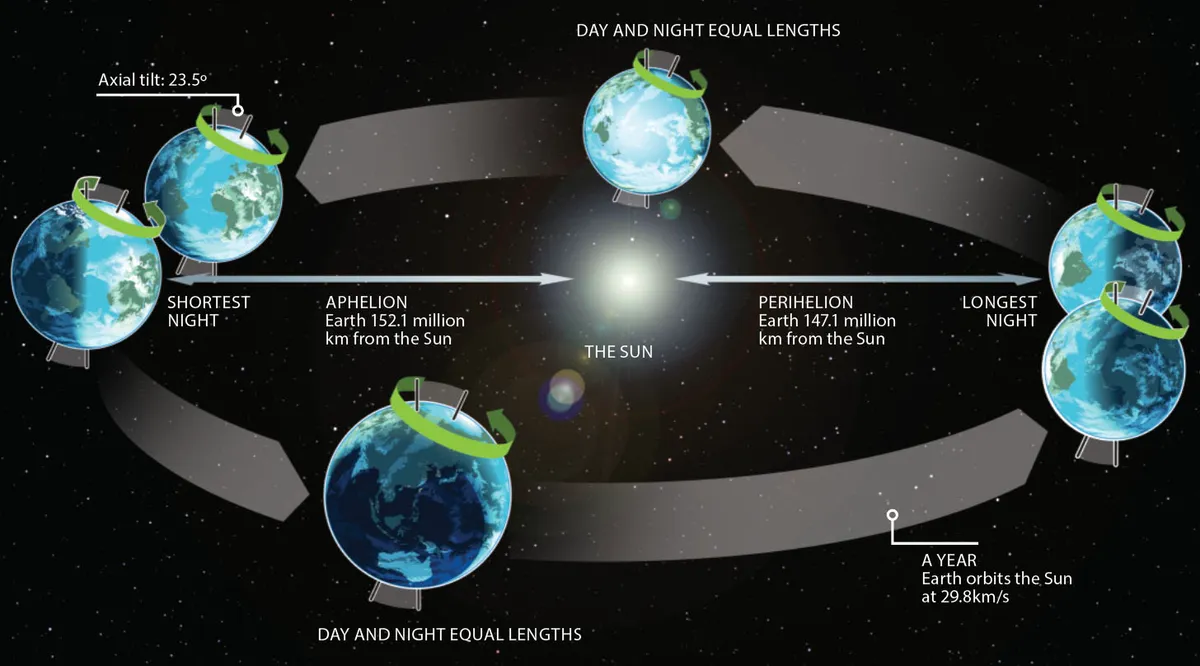As every schoolchild (hopefully!) knows, Earth orbits the Sun.
But this is not simply a case of one perfectly spherical object orbiting in a perfect circle around another spherical object in a flat plane.
And it's the differences in Earth's position relative to the Sun that produces the variations in average temperature, in the weather and in the length of the day that we call the seasons.

Earth’s orbit around the Sun is slightly oval, rather than round, which means there are times when Earth is closer to the Sun, and times when it is further away.
The points at which Earth is closest to or furthest from its parent star are called ‘perihelion’ and ‘aphelion’, respectively, and on the face of it, that should explain the seasons.
The nearer you are to the Sun, the warmer it’s going to be, surely?
Except that it doesn’t work like that – in fact, Earth reaches its closest point to the Sun (perihelion) right in the middle of what we in the northern hemisphere call winter!
That’s because not only is Earth’s orbit around the Sun is not perfectly round, and neither is the planet itself.
More importantly, Earth doesn’t sit at a neat 90° to its orbital plane, but is at a slight angle.
That’s why, when Earth reaches perihelion, it does indeed experience a glorious Sun-drenched summer – in the southern hemisphere, because that’s the part which is tilted towards the Sun.
Six months later, it will be the the northern hemisphere that’s tilted towards the Sun, while the Southern Hemisphere is tilted away from it, and hence we’ll experience summer here while it’s winter Down Under.
If Earth’s orbit WAS simply a case of one perfectly spherical object orbiting in a perfect circle around another spherical object in a flat plane, of course, we wouldn’t get seasons at all: we’d get exactly the same sort of weather every day and every day would be the same length.
But life on Earth would be a bit dull then, wouldn’t it?
